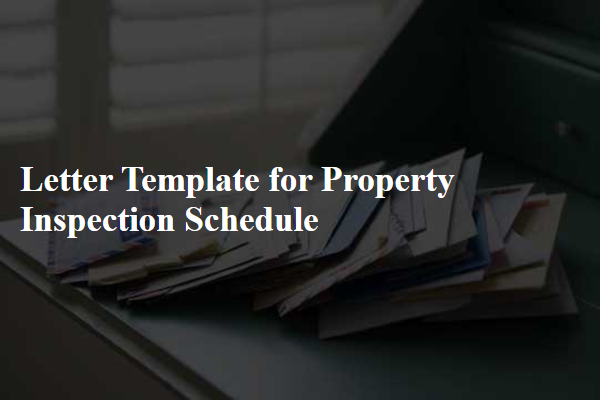Are you planning a property improvement project and need to notify your tenants or neighbors? Crafting the perfect letter can set the right tone and ensure everyone is informed and on board. In this article, we'll share a comprehensive letter template that highlights essential details like project timelines, potential disruptions, and contact information for questions. Join us as we dive deeper into creating a clear and effective notification letter that keeps everyone informed and engaged!

Project Overview and Objectives
Property improvement projects often prioritize enhancing aesthetics, increasing functionality, and boosting property value. These initiatives can range from renovations, such as kitchen upgrades with modern appliances, to exterior improvements like landscaping or facade enhancements. Detailed plans typically define specific objectives, including energy efficiency goals, which may involve installing solar panels for sustainable energy. Local regulations in cities like San Francisco and New York may guide compliance with permits ensuring safety and environmental considerations. Project timelines are crucial, commonly spanning several months, with a focus on minimizing disruption to residents. Successful property improvement increases overall market appeal, potentially resulting in higher property values and attracting prospective buyers or renters.
Timeline and Schedule
The property improvement project notification outlines key phases and their respective timelines to ensure all stakeholders are well-informed. The planning phase commenced on July 1, 2023, and will conclude on July 31, 2023. This includes finalizing design specifications and obtaining necessary permits from the city of Springfield. The demolition phase, beginning on August 5, 2023, is scheduled to last two weeks, ending on August 19, 2023. Following demolition, construction work will commence on August 22, 2023, and is projected to take three months, wrapping up by November 22, 2023. The final inspection, which will be facilitated by the Springfield Building Department, is scheduled for November 30, 2023, allowing for any last-minute adjustments before the official project completion date of December 15, 2023. Stakeholders are encouraged to remain updated as timelines may adjust based on unforeseen circumstances.
Impact on Residents or Tenants
Property improvement projects within residential complexes can significantly impact residents and tenants. Scheduled renovations such as structural upgrades, landscaping enhancements, or modernizing facilities may generate noise levels reaching up to 85 decibels (comparable to a strong vacuum cleaner) during working hours. Key areas affected include common spaces like lobbies, stairwells, and parking lots, which may experience temporary closures or restricted access. Residents should anticipate disruptions that could span several weeks, depending on the project's scale, impacting routines and daily activities. Notifications outlining specific timelines, phases, and potential inconveniences help in maintaining transparency between property management and residents. Additionally, implementing measures to minimize disturbances, such as using sound-dampening technologies or scheduling work during off-peak hours, can vastly improve the living experience during the renovation period.
Contact Information for Inquiries
In property improvement projects, residents must stay informed about upcoming changes impacting their living environment, such as renovations or landscaping upgrades. This notification ensures that property owners provide clear contact information for inquiries, including a designated property manager, phone number, and email address. Residents are encouraged to reach out with questions about project timelines and specifications, understanding that communication is vital for a smooth improvement process. Timely responses can help alleviate concerns, fostering a collaborative atmosphere throughout the renovation phases.
Safety and Compliance Measures
In recent property improvement projects (such as renovations or new constructions) at locations like 123 Oak Street in Springfield, safety and compliance measures are critical. These measures include adherence to building codes (specific regulations governing structural integrity and safety) and installation of safety barriers (fencing, signage) to protect both workers and residents. Regular inspections (scheduled evaluations by certified professionals) ensure that safety protocols, such as fall protection (systems to prevent accidents from heights) and proper equipment usage (ensuring that machinery is used safely), are strictly followed. Furthermore, compliance with local regulations (rules set by city authorities) such as the National Fire Protection Association (NFPA) standards guarantees that fire safety protocols (addressing fire risk management and emergency preparedness) are in place, minimizing hazards throughout the duration of the project.













Comments